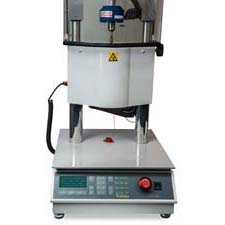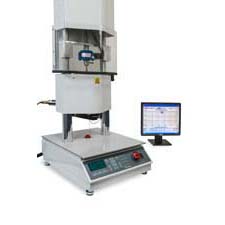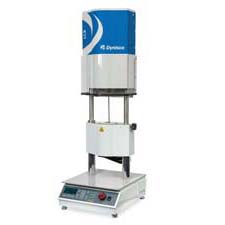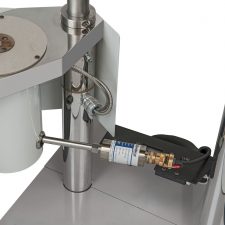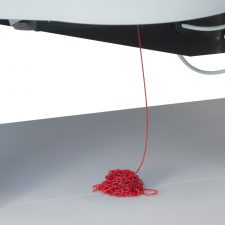LCR7000 Series
The LCR7000 Series Capillary Rheometers offer many new features. They are versatile and easy to use yet offer the most sophisticated materials characterization, data analysis, and reporting capabilities. The LCR series can be used with a standard load cell and a barrel mounted pressure transducer. LAB KARS is the most powerful and easy to use rheological Windows™ based software package available.
- All digital calibration
- Increased speed and force range
- Advanced electronics and software enable up to 45 shear stress or shear rate data points per test
- Unique algorithms for polymer melt stability
- Bi-directional communications enable test parameters to be downloaded from the PC
- Multiple barrel heating zones and adaptive PID temperature control algorithm provide precise and uniform heat up to 430°C (500°C optional for Model 7000 and 7001 only)
- Precision servo-drive motor and transducers enable tight control of stress and rate mode tests
- Tungsten carbide dies and a hardened and honed tool steel barrel ensure long years of service
- LAB KARS, advanced rheology software
Collateral
Applications for Capillary Rheometers
From breakthrough technology in the industry’s most complete line of sensors to renowned quality and performance in indicators, controls, and analytical instruments Dynisco has demonstrated the skill, experience and know-how that not only deliver the right solution for your unique application, but also provide unparalleled customer support.
Training’s
Effects of Viscoelastic Properties of Polymer Melts on the Entrance Flow Pattern
Analyzing elastic properties and predicting flow instability of viscoelastic polymers is important for designing dies and flow systems in an extrusion process simulation or quality/process control purposes. This is even more essential for the processes that are involved with stretching of polymer melt such as film/sheet extrusion or blown film extrusion
Collateral
Introduction to Capillary Rheometers
Introduction, Capillary Rheometers, LCR7000, Dynisco, Laboratory, Quality Control Testing, Dynisco
Collateral
Datasheets
Manuals
Product Videos
LCR7000 Series Capillary Rheometer
Webinars
Simplified Rheology for the Masses
We address issues such as the need to test polymers, the correlation of lab values to online production, and the impact of melt flow index and viscosity on part quality and profitability.
Simplified Rheology: A Technical Discussion
Understand technical aspects of how parameters change between laboratory standards and production and how advanced equipment today can adjust for these differences.
Tech Notes
Detecting Polymers in Material Products
It can be very difficult, if not impossible, to achieve complete indentification of most polymer products. However, in most cases, this is usually not needed; what is needed is the separation, or identification, of numerous molding materials whose identity has been lost, or an indication of the type of material used to create a component.
Key Violation in LabKars Software
The following instructions will resolve the key violation error that appears in Labkars software, which is used to control our LCR7000 series capillary rheometers
The Pressure transducer will allow the end user to monitor pressure in the capillary. High shear rate flow testing is commonly carried out by forcing the melted plastic material through a die of specified size, using piston at a known piston speed and material temperature. The pressure, or force, required to maintain the specified flow rate is measured. The piston speed is then changed and the new force or pressure generated at this speed, is measured and recorded. For each piston speed a force or pressure is recorded. Knowing the barrel dimensions and the piston speed, the volumetric flow rate through the die can be calculated. In turn the shear stress and the shear rate are calculated and used to construct flow curves.

